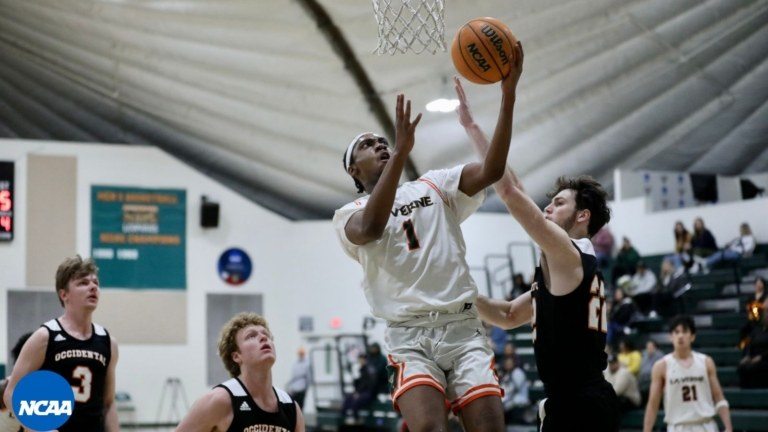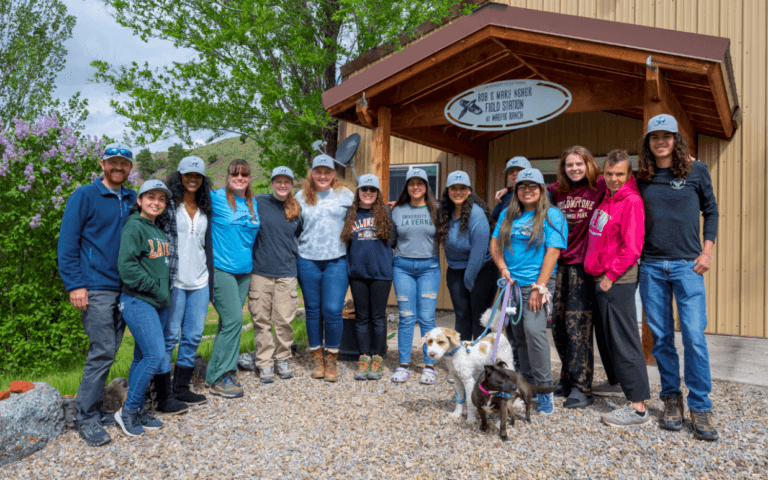Slow-Burning Desire

An evolution of change has taken place in the Biology Department at the University of La Verne during the past two decades. More research is being conducted, more sophisticated equipment is being utilized, and nearly twice as many full-time faculty members and enrolled students fill the halls, classrooms and laboratories on the top floor of Founders Hall.
One person who has seen these changes take place first-hand is also the same person who has experienced his own evolution – which began the day he first set foot on campus. Jerome Garcia was a freshman when came to La Verne back in 1994, and he remains yet today, only now as associate professor of biology and the department chair.
Things have indeed changed at La Verne, and it takes someone who has been a part of it, someone like Garcia, to put it in perspective. Like most biology majors, Garcia entered the program with aspirations of becoming a medical doctor. But he knew it would take time, patience and a lot of book work. Back then, he understood the importance of mastering the fundamentals of science before earning the right to experiment. After writing down word-for-word lecture notes, he would regularly spend time in the library after class doing further research and scanning journal chapters to take back to his dorm and study.
He was that kind of student because it took that kind of dedication to succeed. Perhaps it was the lack of an iPhone, Facebook and YouTube that allowed him to focus without distraction; above all, he was determined to master his craft the right way.
Moving forward to 2013, Garcia is now on the teaching side of things, and he notes the stark differences he sees in his students today, as opposed to the student he once was. One observation Garcia has had to address in recent years is of today’s technology-savvy generation – one that is accustomed to instant gratification.
“In science, nothing is instant. It takes time,” Garcia said. “For a lot of students, it can be frustrating. They come in and immediately want to diagnose. They want to come into the lab and do the experiments with the cells, with the animals. I always tell them, you wash dishes first. Show me you can wash dishes first, thoroughly, and then we’ll think about the next step.”
The challenge for Garcia and his colleagues has been to satisfy students’ needs for excitement and technology while ensuring they digest the foundational material that is first and foremost required of them.
One way to do this is through the implementation of iPad tablet computers in the classroom.
“We are looking to get a number of journal articles out, in regards to how we are dealing with this new generation of students and how they learn,” Garcia said. “Through our Title V Grant, we have been able to purchase iPads to incorporate into our lessons.”
Beginning with Fall Semester 2013, students will have the option of accessing their course lab book for BIO 344 on iPads through iBooks. The lab book is one that Garcia and Associate Professor of Biology Kathleen Weaver have developed with the help of a junior biology major named Wesley Lam.
Lam aspires to be an educator after college and is one of Garcia’s top students. This past summer 2013, he worked on the iBooks project, using the foundational course work provided by Garcia. Using his own technological expertise, Lam made the e-lab book a reality.
“Last year, the book was used in paper form,” Garcia said. “Now I am using the iBooks format, which includes movies, demonstrations and quizzes. The goal is to make it more interactive.”
The work has helped Lam discover his own calling.
“Jerome is a great mentor,” Lam said. “He has taught me how to make science relevant, how to make the study materials relate to life. This summer program has been the foundation for my future. Everything I am learning I will apply when I become a teacher. Creating iBooks, formulating lesson plans and learning new ways to get students excited about science is what I want to do.”
With Garcia as his sponsor, Lam was able to participate in the iBook project during the summer through the Robert Noyce Scholarship Program, which provides funding for science students who have an interest in teaching. Lam has worked so efficiently with the BIO 344 e-lab book, that he began working on a second one for BIO 201. It is scheduled to be released fall 2014.
In a perfect world, it would only require talent and innovation to make great things happen in the Biology Department, but the reality is it takes money, too. Part of Garcia’s responsibility, aside from teaching, is to seek grant funding by writing proposals about the innovations in his department. Faculty have brought in approximately $4.5 million in grant money in the last six years alone. Garnering these funds has been critical for ensuring the department can implement necessary programs and tools to practice relevant science for the 21st Century.
“My colleagues and I go after these grants with the attitude of, ‘How does this fund our research and also enhance the university?’ These grants have allowed us to fund research all year round, keeping our students engaged,” Garcia said. “When we go after these grants, we have to be cognizant of how the money will help us develop the next generation of scientists.”
The National Science Foundation, the National Institute of Health, United States Department of Education and the United States Department of Agriculture are among the organizations that have helped fund critical developments in the Biology Department.
Garcia, a first-generation student, is committed to providing his students with not only resources but one-on-one attention. One of his main goals as a professor and a mentor is to help his students find their calling.
“I’ve noticed many students come in with a very myopic view of what science is,” Garcia said. “Probably 95 percent want to go the medical school route. What happens is they get exposed to our field biologists, our botanists, our microbiologists, and they start saying, ‘Wow, this is interesting stuff.’ It has nothing to do with the medical field, and all of a sudden they start realizing their passion for science can be expressed in other ways, other ways than the medical doctor profession.”
Garcia gets it because he was once one of those students who decided from the get-go that becoming a medical doctor was the only way. Not until he was exposed to all of the career possibilities that biology can offer did Garcia make the decision to pursue teaching.
The Biology Department is currently composed of eight full-time faculty members who come from a variety of backgrounds. One of Garcia’s campaigns is to expose students to as many full-time faculty as possible during their freshman year by having faculty with different expertise teach introductory courses.
“I would like to provide them with the proper foundation to succeed in upper division biology courses, but at the same time, expose them to different areas,” Garcia said. “The hope is that by the end of their freshman year, by the end of their foundational courses, they will have an open mind to looking into other areas to satisfy their passion for science, as opposed to later on.”
And because the University of La Verne is a first-generation, Hispanic-serving institution, Garcia holds that kinesthetic learning is key.
“This particular population learns through doing and touching, much like I did,” Garcia said. “It was the labs that saved me. I couldn’t learn in lecture. I wrote down notes word-for-word but not until the labs, where I got to do things hands-on, did I understand.”
A lot of the opportunities that La Verne provided Garcia as a student served as a steppingstone for him to get into the molecular pharmacology and toxicology Ph.D. program at the University of Southern California’s School of Pharmacy.
“I went into the USC program to meld my love for chemistry and biology,” Garcia said. “While a student, Harvey Good (professor of biology, emeritus) recruited me to become his teaching assistant, which exposed me to my passion of teaching.”
Part of the reason Garcia chose the education path is because of the lifestyle it could provide. He could have a fulfilling career of teaching, experimentation and research, plus the flexibility to be a family man. As a student, he once shadowed a doctor of osteopathic medicine Monday through Sunday.
“I questioned him about his lifestyle and he told me he was rarely home to spend time with his wife and children because his job required so much of his time,” Garcia said. “I started to think about how often my parents worked when I was a child. They worked hard to make sure I had a good life, but it would have been nice to have them around more. My attitude was this: If my parents sacrificed to give these opportunities to me, I just have to be smart enough and then I can have it all.”


